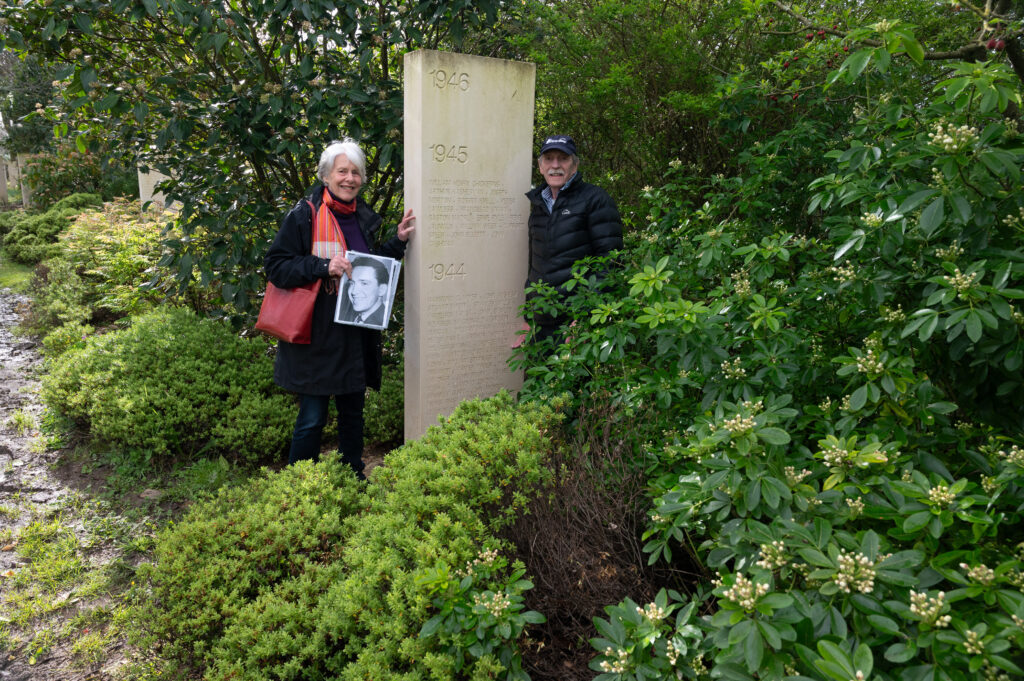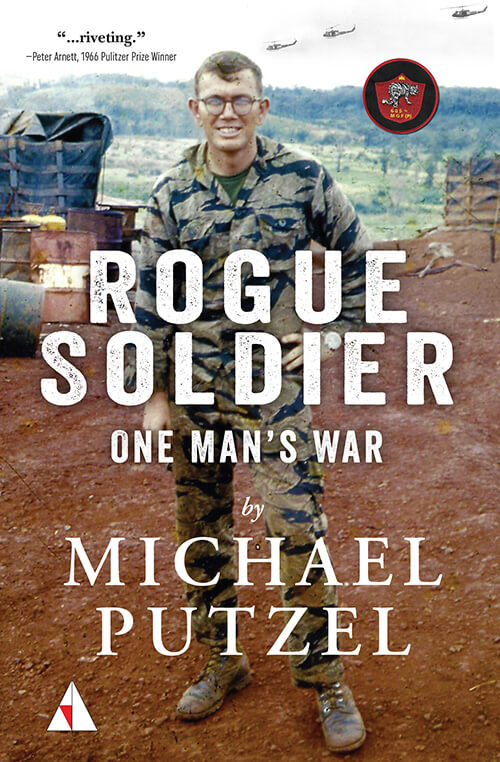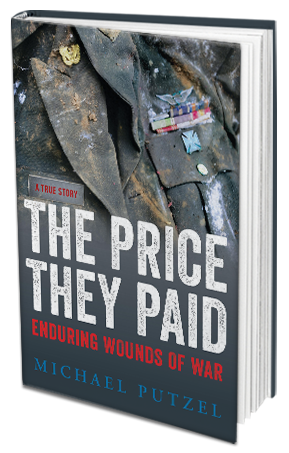Blog
A Sobering Surprise
Posted by Michael Putzel • April 06, 2024
BAYEUX, France—On a trip with our granddaughters to the Normandy beaches where Allied forces landed on D-Day, 1944, our guide surprised us with a detour to a secluded park in the nearby town of Bayeux, where we walked, practically alone, through a touching monument to our colleagues killed in war.

On rectangular slabs of white marble standing tall along both sides of a winding path, still muddy from overnight rain, were carved the names of journalists. Some, like Ernie Pyle, were familiar from World War II history. Our guide, Nigel Stewart, pointed us to the name of another, a photographer for The Associated Press, where Ann and I both worked for many years. The photo was of Bede Irvin, who was killed by friendly fire in a U.S. bombing raid that also killed Lt. Gen. Lesley McNair on July 25, 1944, as U.S. forces struggled to break through German resistance five weeks after the Normandy landings on June 6. Above Irvin’s name on the slab, among those who died near the end of the war in Europe in 1945, was Joseph Morton, also of AP. I had just read about his fate in a new book: Newshawks in Berlin–The Associated Press and Nazi Germany.
Morton disappeared accompanying a 13-member U.S. and British OSS team on a mission in Slovakia to rescue downed Allied flyers. Only weeks after the Germans surrendered, AP correspondent Lynn Heinzerling traveled to Austria, which had been annexed by Hitler, to investigate what had happened to Morton. He interviewed witnesses who told him the reporter was captured by the Nazis with the OSS team, and all were transported to the notorious Mauthausen concentration camp in Austria. There, they they were tortured, lined up and shot one at a time on orders from Berlin. Morton was the only reporter known to be executed during the war.
On another slab a few yards farther along were the names of four friends and colleagues I knew in Vietnam, especially AP’s Henri Huet, one of the finest combat photographers of any war. He died with three colleagues from other Western news services: Larry Burrows of Life magazine, Keizaburo Shimamoto of Newsweek and Kent Potter of UPI. Their helicopter was shot down over Laos in 1971. Tu Vu, a stringer for AP, was not named with the others because he was a sergeant in the South Vietnamese army working as a combat photographer. Nearby was the name Huynh Thanh My, also AP in Vietnam, and so many more.
The memorial was erected by Reporters Without Borders (http://rsf.org/), known as RSF, the initials of its name in French, Reporters Sans Frontieres. Founded in France in 1985 to oppose censorship and defend freedom of expression throughout the world, RSF’s U.S. affiliate is registered as a 501(c)(3) nonprofit organization.
The book about the AP in Berlin during the Third Reich was written by Lynn Heinzerling’s son, Larry Heinzerling, who like his father had a distinguished AP career, and longtime AP researcher Randy Herschaft. Larry died of cancer before Newshawks in Berlin was finished, and Herschaft and Larry’s widow, Ann Cooper, completed the extensive project that delved into compromises AP management made to continue operating in Germany after Hitler’s takeover in 1933.
One thought on “A Sobering Surprise”
Comments are closed.







Thank you, Mike!